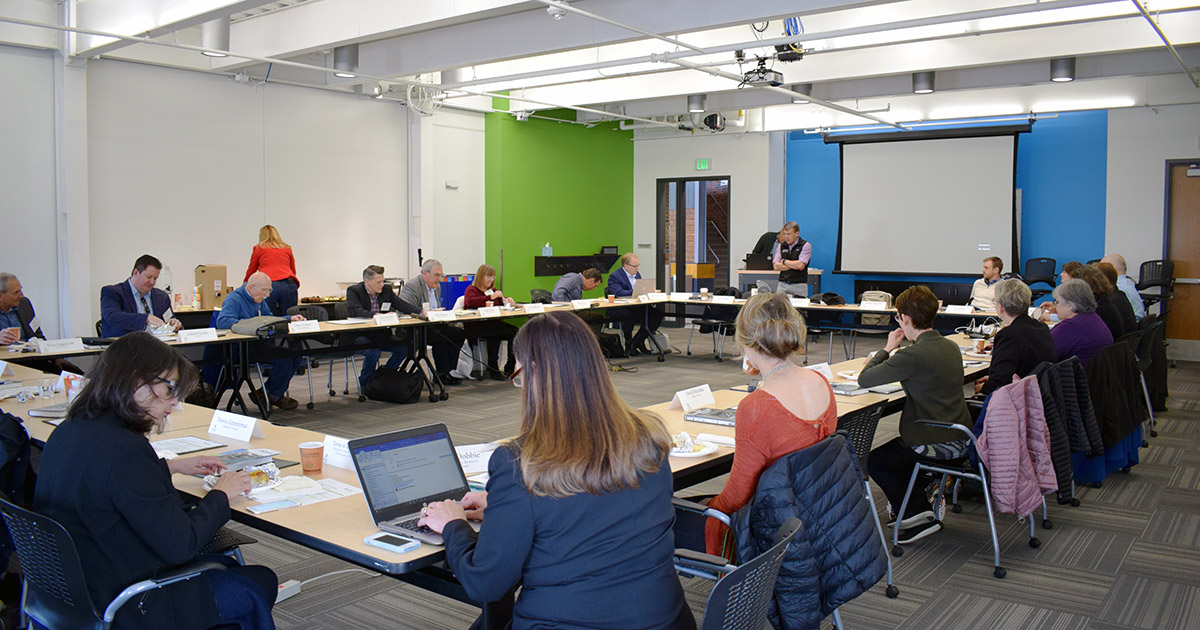
Colorado State University’s Energy Institute recently celebrated its leadership as a “place of innovation” with an invite-only workshop that brought entrepreneurs from across the nation together.
The Energy Institute’s “Places of Innovation Workshop” was held at their flagship facility, the Powerhouse Energy Campus. The workshop featured a keynote address on “models of innovation, focusing on technology brokering and network models,” by Professor Andy Hargadon of the University of California of Davis. Executives and serial entrepreneurs flew in from all over the United States, from as far away as Alaska, to participate.
In 2015, the Smithsonian Institution designated Fort Collins as one of six places of innovation in the U.S. and the only designee in energy innovation. Fort Collins represents clean energy development in the 21st century and is known as a “Place of Invention” globally.
“We tend to lionize lone individuals as heroic inventors and drivers of innovations, but really innovation is powered forward by networks of people,” Hargadon said. “Powerhouse and the Fort Collins community are classic examples of how the power of linkages in a geographic location can be used to solve global problems.”
Hargadon is the founding director of two centers at UC Davis: the Child Family Institute for Innovation and Entrepreneurship, and the Energy Efficiency Center. He is also the author of the book “How Breakthroughs Happen: The Surprising Truth About How Companies Innovate.”
Hargadon shared how networks, not individuals, contain the key to creating a place of innovation. He used the examples from penicillin to search engines to illustrate how the idea or knowledge of something does not in itself lead to innovation.
For instance, mold was used to treat wounds in Egypt before Alexander Fleming discovered penicillin, and even then it took a decade before Howard Florey was able to create the lifesaving pharmaceutical drug. Hargadon told participants that it was the network surrounding Florey that allowed the innovation to move forward and overcome each potential road block.
Similarly, Google was the 23rd search engine in the marketplace, but by the time it launched, it had a network of new resources at its disposal, such as analytics.
Biosphere 2 annual meeting
Congruently to the workshop, Biosphere 2 held its annual spring board meeting at the Powerhouse Energy Campus. The iconic Biosphere 2 is owned and operated by the University of Arizona. With its five biomes – ocean, rainforest, wetlands, grassland, and desert – and three Landscape Evolution Observatory structures, Biosphere 2 bridges traditional laboratory-scale and observational field research. It also provides one-of-a-kind controlled experimentation and unprecedented systems-level landscape-scale analysis.
Biosphere 2 chose to hold its meeting in conjunction with the “Places of Innovation Workshop” to learn what makes the innovative community in Fort Collins tick, and apply that insight to Biosphere 2.
“CSU’s Powerhouse Energy Campus provided a truly inspirational setting for our Biosphere 2 board meeting,” said Joaquin Ruiz, director of Biosphere 2 and University of Arizona vice president for innovation. “The Powerhouse is a remarkable success story and an ideal setting for evoking discussions around an innovation ecosystem and what it takes to create a successful one.”
Fort Collins and the Energy Institute have proven to be strong showcases of innovation. Diverse groups from Environmental Defense Fund to the natural gas industry host high-level events at CSU’s Powerhouse Energy Campus in order to learn from its model of using science to develop solutions and enterprise, and to scale them for global impact.
“We have created something special here in Fort Collins and have become a place of innovation,” said Professor Bryan Willson, founder and executive director of the Energy Institute. “We are always looking to do even more, and are excited to be able to share what we’ve discovered with our peers.”